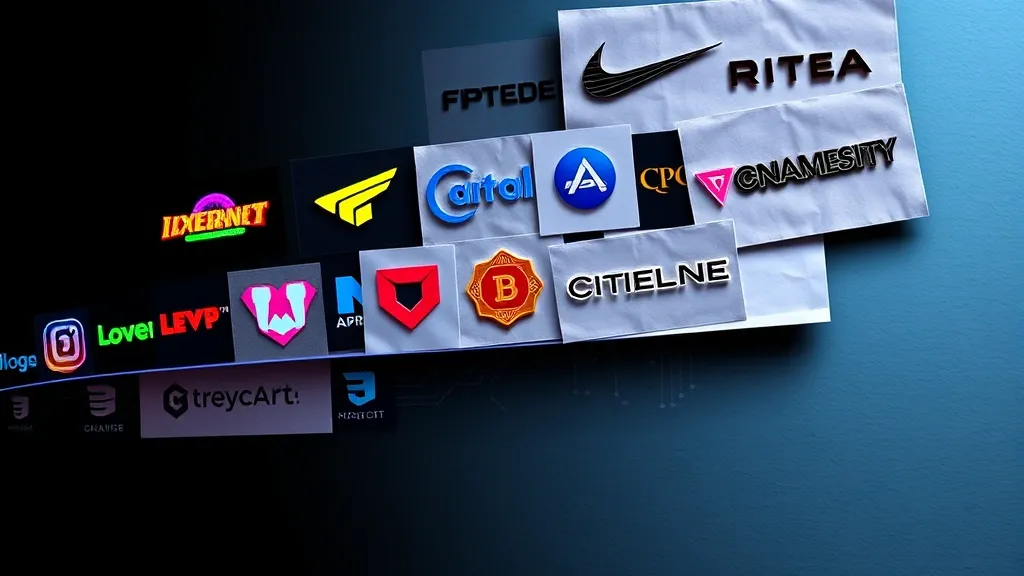From Print to Pixels: The Dawn of Digital Branding
Alright, let’s take a little trip down memory lane, shall we? Back in the day, branding was all about print. Think billboards, business cards, and those glossy magazine ads that always seemed to be just a little too perfect. Logos had to be designed for physical spaces, and they had to stand out on paper. But then, boom! The internet happened, and everything changed.
Digital branding kicked off in the late ’90s when websites started popping up like mushrooms after a rainstorm. Suddenly, companies needed logos that looked good on a screen, not just on a billboard. It was like a massive makeover. Remember the early websites? They were kinda like the awkward teenage years of the internet—lots of bright colors, clashing fonts, and way too many animated GIFs. Yikes!
As brands started to embrace this new digital landscape, they realized their logos had to be more than just pretty pictures. They needed to be versatile, recognizable, and easily scalable. I mean, have you ever tried to zoom in on a pixelated logo? It’s not pretty. So, minimalist designs started to gain popularity. Think about it—less is more, right? Brands started simplifying their logos, opting for clean lines and bold colors. It’s like they all decided to go on a diet!
- Responsive Design: Logos now had to look good on various devices, from smartphones to desktop computers.
- Social Media: The rise of social platforms meant logos had to fit into tiny profile pictures without losing their essence.
- Brand Storytelling: Companies began to focus on what their logos said about them, creating a narrative that connected with consumers.
And let’s not forget about the power of social media. A logo isn’t just a logo anymore; it’s a brand’s identity, especially on platforms like Instagram or Twitter where visuals reign supreme. If your logo can’t hold its own in a sea of memes and cat videos, then what’s the point? It’s gotta pop!
So, as we rolled into the 2000s and beyond, the digital age transformed the logo from a static design into a dynamic element of brand identity. It’s fascinating to see how far we’ve come, right? From fancy fonts and complicated designs to sleek, modern logos that can be recognized in a blink. It’s like the evolution of the logo is a reflection of our fast-paced digital lives. And who knows what’s next? Maybe holographic logos? Okay, maybe I’m getting ahead of myself, but wouldn’t that be cool?
Logos in the Wild: How Icons Became Interactive
So, let’s chat about logos for a sec. Remember when a logo was just a static image? You’d see it on a business card or maybe a storefront, and that was pretty much it. Fast forward to today, and logos have totally transformed into these interactive beasts. Seriously, it’s like they’ve got their own personalities now. How cool is that?
It all started with the rise of digital marketing and, of course, social media. Brands realized that just slapping a logo on something wasn’t gonna cut it anymore. They needed their logos to do more, to engage people, and honestly, to just look cool while doing it. I mean, who doesn’t love a logo that winks back at you? Okay, maybe that’s a bit much, but you get the point.
- Animated Logos: Ever seen those logos that come to life? They slide, bounce, or even change colors. It’s like they’ve got a mind of their own. These animated logos can create a more memorable experience and keep viewers interested. It’s like your logo is saying, “Hey, look at me! I’m fun!”
- Responsive Designs: Logos nowadays adapt to different screens and devices. You’ve got your desktop, tablet, and mobile versions, making sure your logo looks good anywhere. I mean, have you ever tried to read a tiny logo on a phone? Not fun.
- Interactive Elements: Some logos even encourage interaction. Think about those logos that change when you hover over them. It’s like a little surprise waiting for you. You’re just minding your own business, and boom! Your logo is suddenly more than just a logo.
What’s wild is how these changes reflect the way we engage with brands. We’re not just passively consuming anymore; we wanna interact, play, and feel connected. If a logo can make me smile or even chuckle, then it’s doing its job, right? It’s like the logo is a friend now—one that’s always there, looking good and ready to engage.
In the end, logos have stepped up their game in the digital age. They’ve gone from being a simple identifier to a dynamic part of the user experience. And honestly, I’m here for it. It’s like watching your childhood friend grow up and become a rock star. Who wouldn’t wanna see that?
The Great Shift: Embracing Minimalism and Versatility
So, let’s talk about this big shift we’ve seen in logo design over the last few years. It’s like everyone woke up one day and decided that less is definitely more. I mean, who knew that stripping down your logo to its bare essentials could be such a game-changer? But here we are, in the age of minimalism, where simplicity reigns supreme.
Remember those logos that were crammed with every possible image or font? They were like a buffet of design choices, and honestly, it was overwhelming. Now, it’s all about clean lines, bold colors, and a design that doesn’t need to yell to be noticed. Think of Apple’s logo—just an apple with a bite taken out. Simple, iconic, and it totally works. You don’t need a whole dissertation to explain what it represents, right?
These days, brands are all about versatility. A logo needs to look good whether it’s on a billboard or a tiny mobile screen. With the way we consume content today—scrolling on our phones, swiping through social media—logos have to be adaptable. It’s like trying to find the perfect outfit that works for both a beach day and a fancy dinner. Not easy, but totally doable!
- Scalability: A great logo can shrink or grow without losing its essence. You want it to look sharp on a business card and just as snazzy on a huge banner.
- Timelessness: Trends come and go, but a minimalist logo can stand the test of time. Think about how many logos from the 70s and 80s are now cringe-worthy.
- Brand Recognition: A simple design is easier to remember. If your logo looks like a tangled mess, good luck getting people to recall it!
For me, this shift towards minimalism and versatility feels a bit like decluttering your closet. You get rid of all those clothes you never wear and suddenly, you can see what you actually love. Logos are kind of the same. By focusing on what really matters, brands can create something that resonates more deeply with their audience.
In conclusion, as we continue this journey through digital marketing, let’s not forget the power of simplicity. Embracing minimalism isn’t just a trend; it’s a way for brands to connect more authentically with their audience. And hey, who doesn’t appreciate a little less clutter in their life?
Future Shock: What AI and Augmented Reality Mean for Logos
Alright, let’s dive into the wild world of AI and augmented reality (AR) and what they mean for logos. You know, those little images that we often take for granted but are actually pretty powerful? Yeah, those! With tech evolving faster than I can keep track of my coffee orders, it’s no surprise that logos are also getting a major upgrade.
First off, let’s talk about AI. It’s creeping into every corner of our digital lives, and logos are no exception. Think about it: AI can analyze consumer behavior, trends, and preferences in real time. So, imagine a logo that changes based on who’s looking at it. Crazy, right? It’s like having a wardrobe that morphs depending on your mood—one day it’s casual, the next it’s sleek and professional. Personalization at its finest! But honestly, I can’t help but wonder if we’ll end up with logos that have more personality than some people I know.
Now, onto augmented reality. This one’s really exciting. Picture this: you’re walking down the street, and you point your phone at a store’s logo. Suddenly, the logo comes to life, maybe it tells you about the brand’s history or shows you a funny video. It’s like logos are getting their own mini-makeovers, and who doesn’t love a good glow-up? AR can turn a flat image into a full-on experience, making brands more engaging and memorable.
But, here’s the catch. While all this tech sounds super rad, it raises some questions. Do we really want logos that are so dynamic they change every time we look at them? That could be cool or just plain confusing. I mean, imagine trying to remember what a brand looked like when it changes every week! It could be a nightmare for brand recognition.
- Will traditional logos become obsolete?
- How do we maintain brand consistency in an ever-changing digital landscape?
- Can we keep the essence of a brand while embracing these new tech trends?
As we move forward, it’s clear that logos are in for some serious transformation. The future might be unpredictable, but one thing’s for sure: the blend of AI and AR is gonna make logos more interactive and personal. And who knows? Maybe one day, your favorite logo will send you a little notification, like, “Hey, don’t forget to grab a coffee!” Now that’s a future I can get behind!

